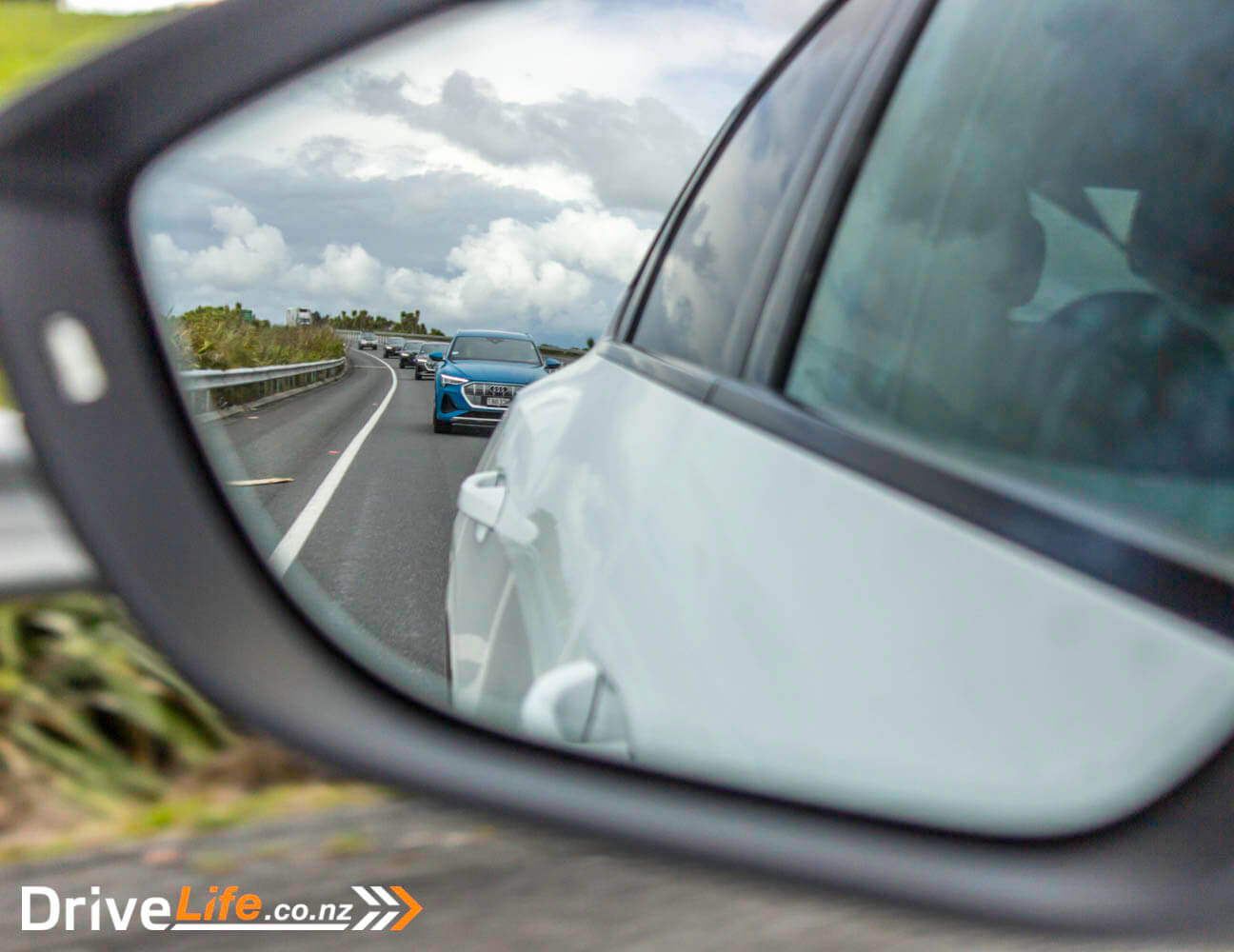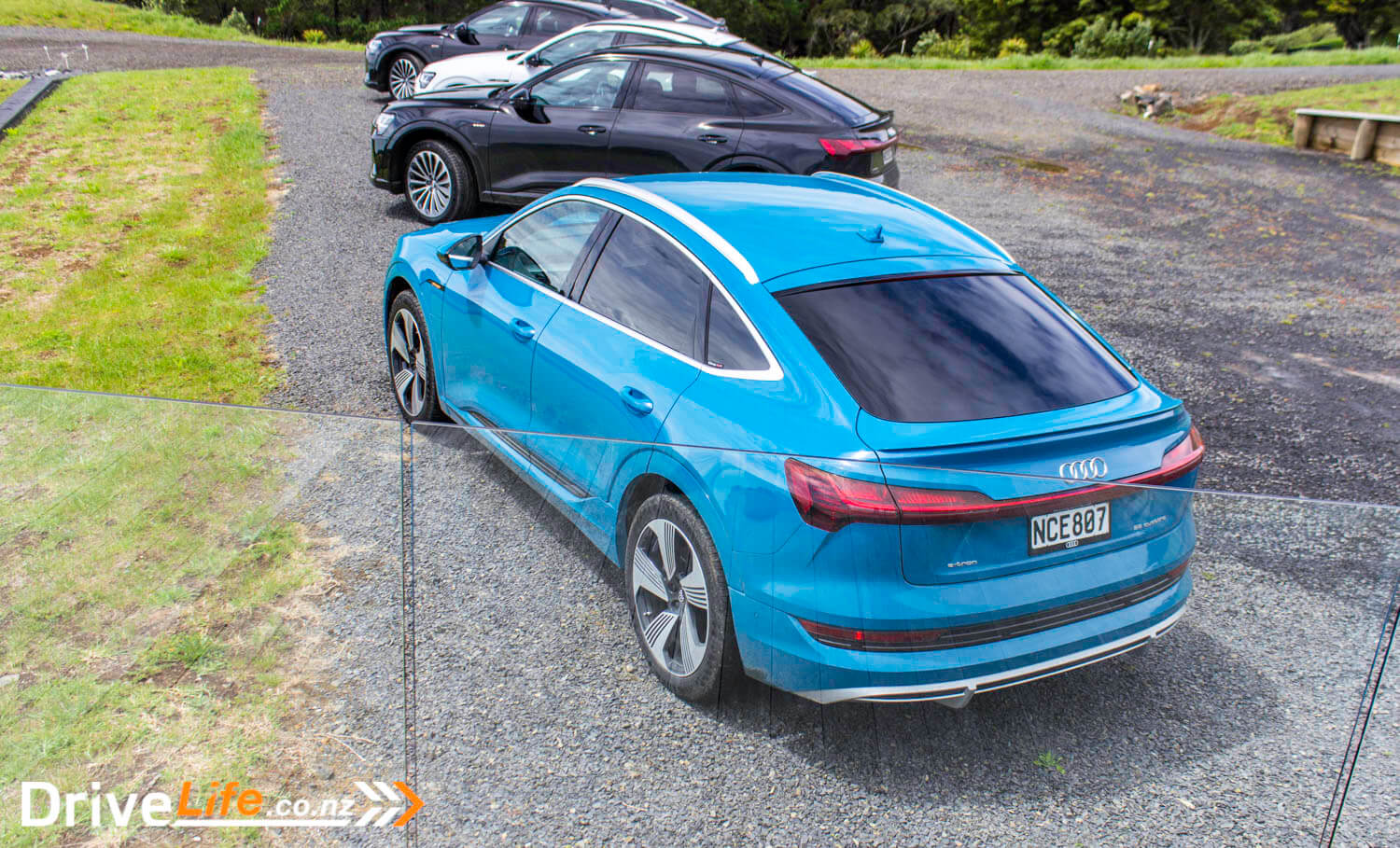We like the Audi e-tron here at DriveLife. Rob reviewed it in 2019 and enjoyed it, with Audi’s first EV SUV making an impact with us at that time. Since its launch, Audi have promised us a Sportback version, and while it’s taken a while, it’s finally here.
We shot to Auckland to get the lowdown on the car, and take it for a bit of a drive. Without any presentations, we had a driver’s briefing and then hit the road in the new Sportback, heading to Raglan for lunch, but stopping at the Bombay Hills on the way to check out the new hyper charger from Charge.Net. We didn’t get much of a look at the Sportback design the way the cars were parked, so it was hit the road and check it out later.
On the motorway, the e-tron impressed all over again. Quiet naturally, but a nice cockpit, smooth and refined. It didn’t take long to get to the Bombay Hills, and we cruised in silence to the new hypercharger. Most public charging stations – operated by Charge.Net or not – can charge at a maximum of 50 kilowatts (kW). Many of the non-Charge.Net chargers are less than this, with AC electric vehicle (EV) chargers being around 22kW.
Charge.Net says that in a partnership with EECA, there are now 9 of these new hyperchargers around the country, with two units at the Bombay Hills. These hyperchargers can pump in 300kW to an EV that can handle it. Currently, only the Porsche Taycan can take the full 300kW, while the e-tron is next, able to handle 150kW. Still, that’s three times the normal amount.
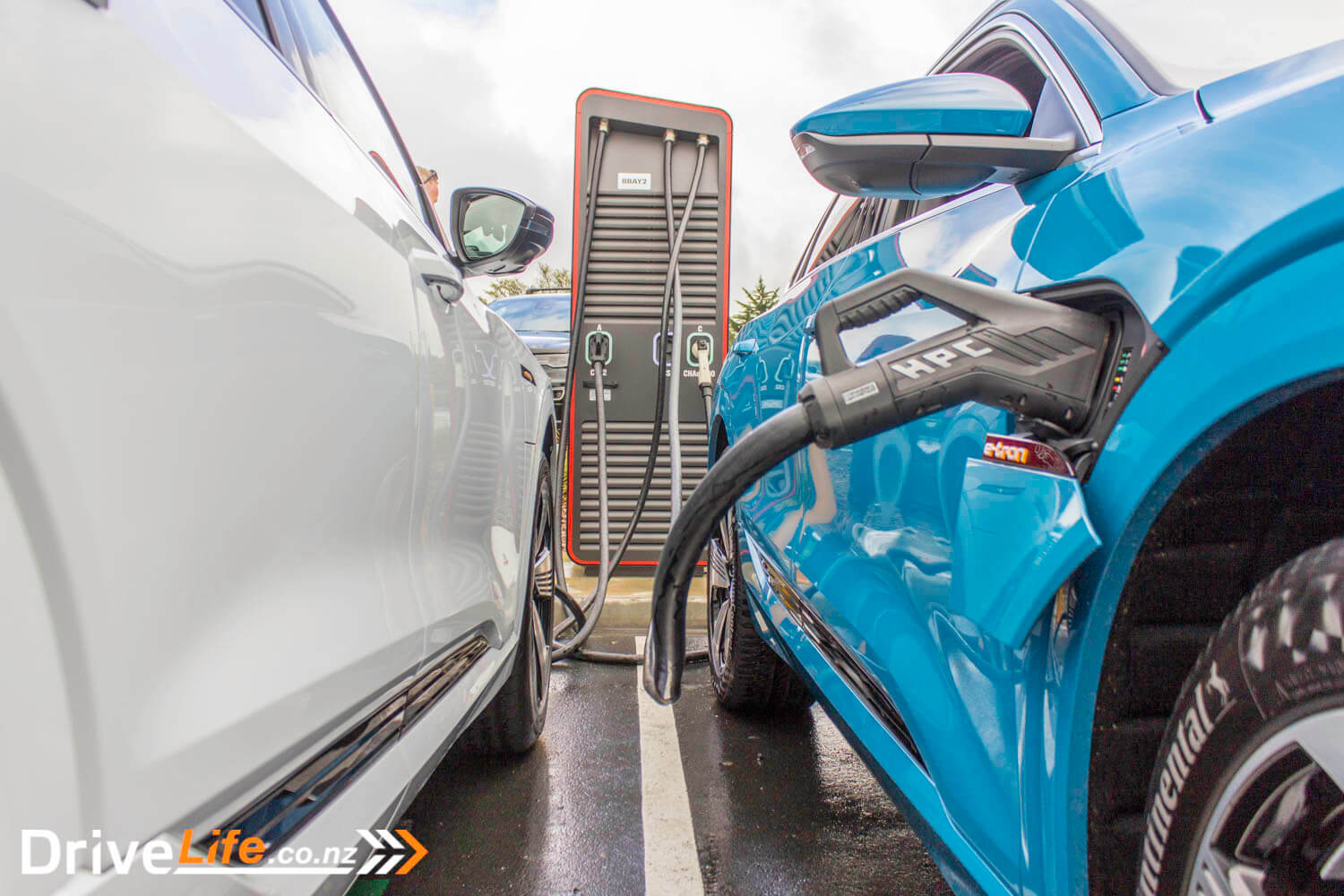
Not only that, but with three cables connected, up to three cars can charge at the same time on a hypercharger – as long as each has the type of cable required. This is a far cry from the current chargers that have two different sorts of cables, but only one EV can charge at one time. A ‘normal’ EV like a Nissan Leaf can still use a hypercharger, but would only be able to take the maximum current that a Leaf can.
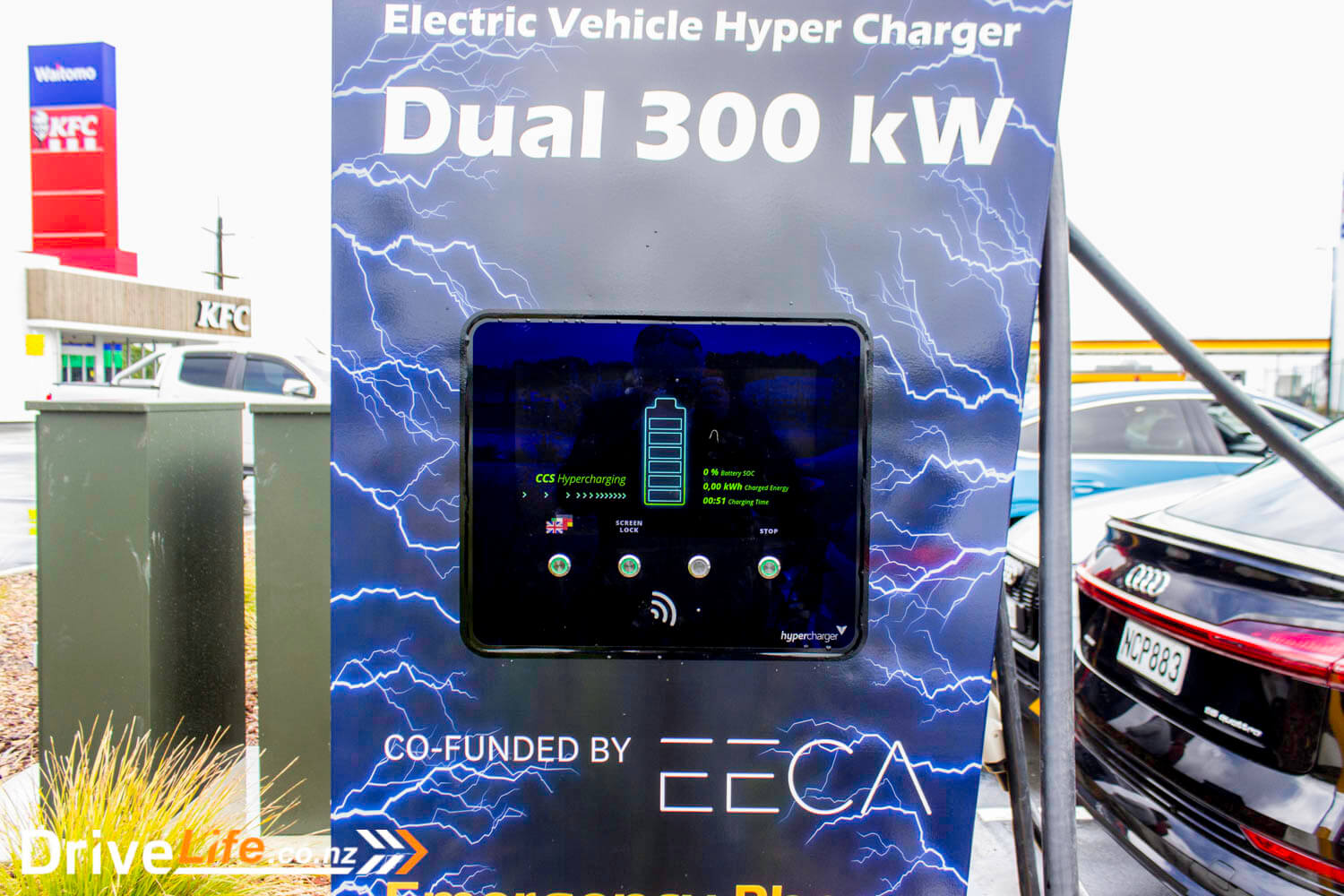
In around 12 minutes, we had pumped in 15kW of power into each of the e-tron Sportbacks. While they were charging, it was a chance to check out the Sportback design. It looks well done, and is very typical of any Audi Sportback body style. It certainly looks better (in my eyes) than two other German brand’s fastback/sportback body styles.
We left Bombay, and headed south, turning off to go on some back roads via Glen Murray, it took almost 2 hours of driving to get to Raglan, moving from some fast sweepers, into tight and hilly corners. The weather didn’t help much either, with either a damp road or consistent rain. Still, with all-wheel-drive via two electric motors, the e-trons took to the conditions without issue. They are a big car, and can feel big to drive on those tight bends, but they still give you the confidence to keep the car safe.
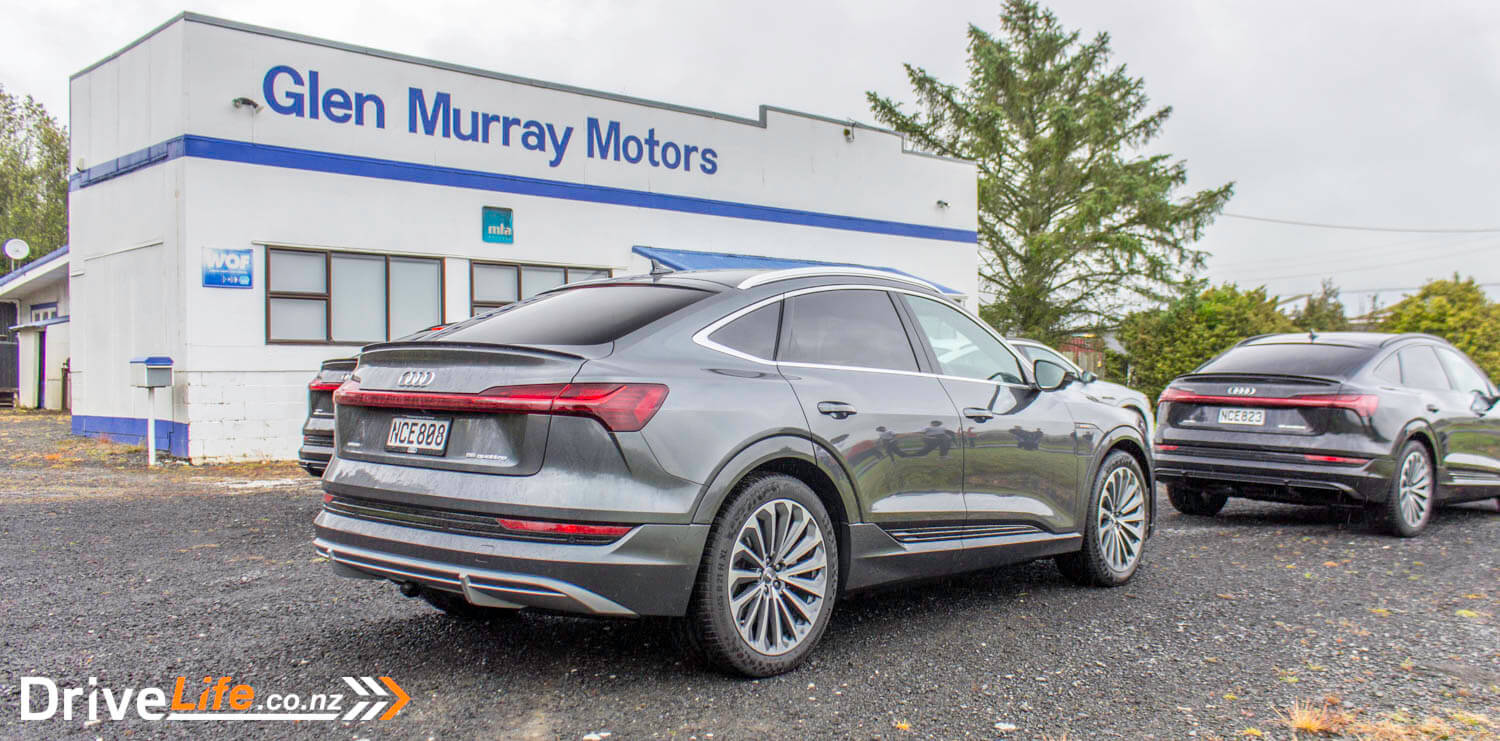
It’s been a while since I’ve been in an e-tron, and it took me a few minutes to remember how the brake regen works. There’s an automatic setting and a manual setting. In manual, the driver controls the regen by using the paddles, as happens in other EVs with paddles. However, in auto mode, the car manages this for you, increasing regen as needed, depending on the conditions. This includes coming up to a car in front – you ease off the accelerator, and if the car needs to slow down more, the regen will come in by itself, increase as much as it needs to stop you hitting that car in front. It’s not a true one-pedal driving system, but it comes pretty close. It’s a breeze to drive the car smoothly, letting the auto regen do its thing.
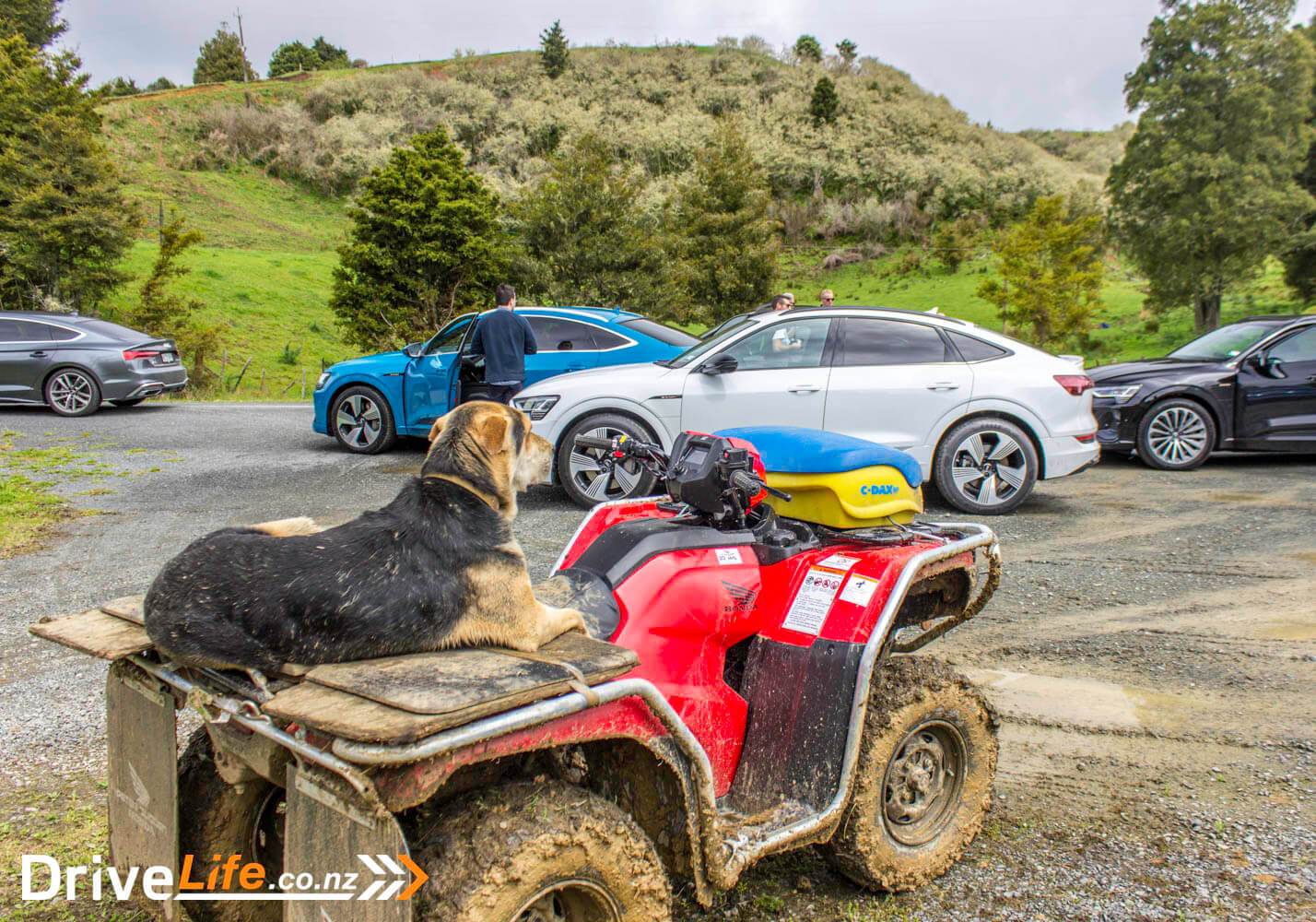
There’s a good amount of power on hand in the e-tron, and the Sportback body model is almost identical to the SUV body model, so that means 265kW in normal driving, or if you select Dynamic driving mode or shift the lever into Sport mode, one of the gauges will light up with ‘boost’, where, on full throttle, you can draw on 300kW of power. The e-tron is a heavy car, but 300kW can get it moving very quickly.
Before long at all, we were at Raglan at The Glasshouse, ready to get some more detail on Audi in general, and the new e-tron Sportback.

Dean Sheed – General Manager for Audi New Zealand.
Dean had some not-nice numbers to kick off his presentation; In New Zealand, the forecast for 2020 for the total passenger market would be down 25%, and the premium market down 15%.
For Audi, they’re still committed to having 30% of their product range as EVs by 2025. In fact in Europe, they’re about to launch the e-tron Scooter, part of their mobility plan. There’s no commitment to getting the e-tron Scooter in New Zealand.
In New Zealand in 2020, Audi has managed to launch 20 new or facelifted models, impressive by any standard.
Globally, EV sales for Audi for Q1 and Q2 for this year have added to 17,641 – not huge, but growing every year. This year also marks the 40th anniversary of the quattro system, first seen in 1980, and a dominating force in rallying all over the world.
Audi has also signed the Paris Agreement, and is totally focused on carbon neutrality, says Dean. They aim to be carbon neutral by 2050, and expect all the manufacturing plants to be Net Carbon Zero by 2025. It may sound like a bold claim, but they’ve got just 3 plants to go.
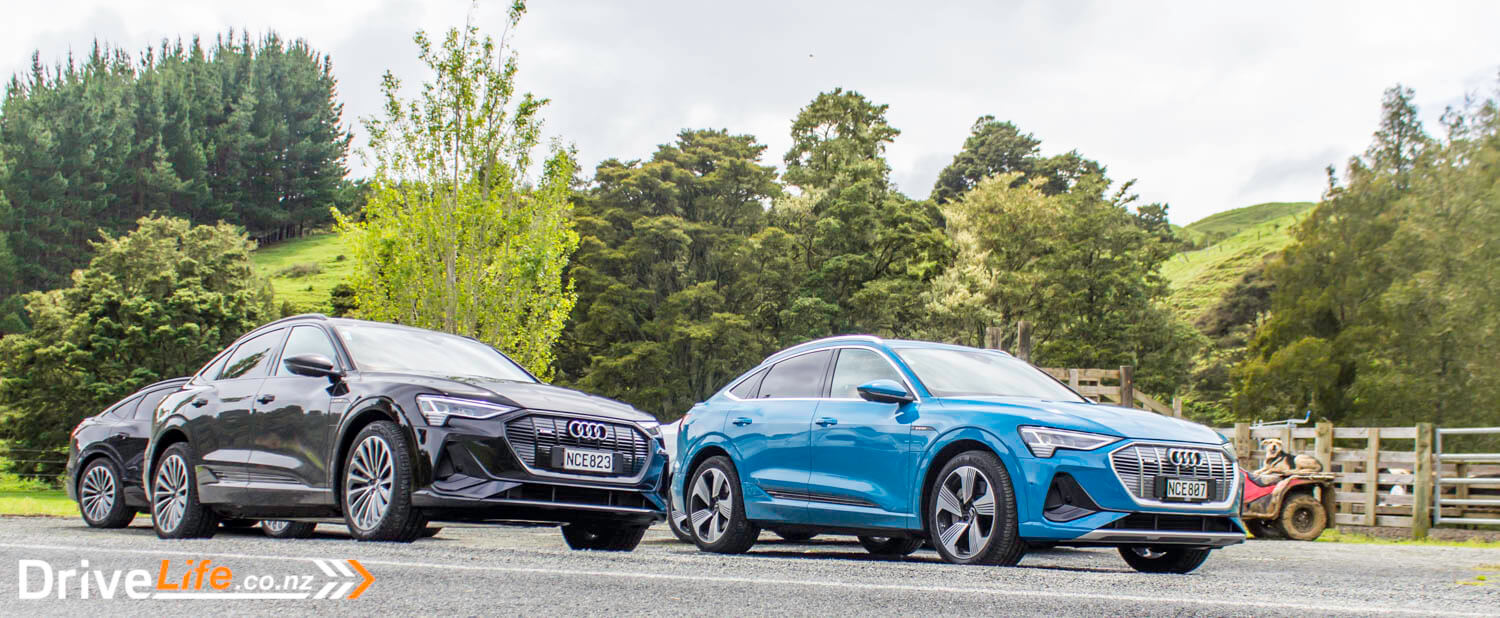
Near the end of this year, the e-tron GT will start production in the same factory as the R8, in Neckarsulm, Germany. For the first time ever for Audi, there was no physical prototype for the e-tron GT – it was all done using virtual reality (VR). He says there will be ‘e-sounds’, or a fake performance sound for the GT, but assures us it will sound good. We certainly hope so. The e-tron GT will be on sale in January 2021, and will have a mid-2021 delivery date. It’s the sister car to the Porsche Taycan, so promises to be incredible.
He also mentioned the e-tron S is coming in 2021, packing 370kW and 973Nm (in Boost mode), and will be the first Audi EV to have 3 electric motors. There’s also S-tuned suspension, a new Quattro system, torque vectoring, variable torque distribution, and SUV and Sportback body styles. The time for the quattro system to move from two-wheel-drive to all-wheel-drive is 30 milliseconds, Dean says, far faster than any mechanical system. The new quattro system will allow delivery of up to a maximum of 2,100Nm of torque per wheel (!).
The Q4 e-tron is expected to be a high volume seller for Audi, Dean said. There will also be two bodystyles for this model, again SUV and Sportback. It’s due for late 2021 production, and should be in New Zealand in early 2022. The Q4 e-tron is a compact SUV, with 225kW of power, an 82kWh battery, and a range of 450-500km.
Dean went on to say that after a survey, 80% of EV charging is done at home (for Audi owners). For charging, the e-tron car comes with a 32-amp plug for charging at home as standard, as well as a 10-amp plug ‘for emergencies’, and buyers are encouraged to get the 32-amp unit installed. In association with Vector and HRV, Audi can organise a free home-check to make sure an e-tron owner’s house can take the power draw.
All Audi dealers now have 22kW AC charging and 50kW DC fast chargers, with some having 175kW units. Apparently the Government has purchased 3 e-trons this year for the ministerial fleet, to replace 3 “large diesel sedans”; 1 Auckland 2 in Wellington – one of those used for the Beehive to airport run.

Jarred Ho – Audi New Zealand Sales Operations Manager
It was Jarred’s turn for some news; in New Zealand in 2017, Audi sold 335 new EVs. Year to date for 2020, the number is 1076, with the total for 2019 at 1876.
E-TRON SPORTBACK
Finally, we got to the Sportback model. There’s no ‘base’ Sportback, the model starts with S Line trim, and has a WLTP range of 446Km. The Sportback is 13mm lower overall than the e-tron 55 and the drag coefficient is slightly lower at Cd 0.25 (vs. 0.27).
21” alloys are standard, as is air suspension, there’s body coloured wheel arch trims, and even with the Sportback body style, there’s still 976mm of head height in the rear seat. From the front of the B pillar forward, the car is identical to the SUV body style. The boot is slightly smaller at 615 litres (down 45) with the second row up, and with the second row down is 1665 litres – down 60 litres.
There’s a 400-volt lithium-ion battery, with 86kWh of usable battery capacity – identical to the e-tron SUV. The car will get to 100km/h in 5.5 seconds in Boost mode. The drivetrain is identical to the SUV but the Sportback has the latest quattro system, which will run rear-wheel-drive most of the time.
Jarred reminded us the e-tron is the first production car ever to use brake by wire. Aerodynamics play a big part too, he says, using the example of the 30 bolts that hold the EV batteries underneath. The bolts are recessed into dimples like a golf ball, all in the name of aerodynamics.
The e-tron Sportback is priced at $169,900.
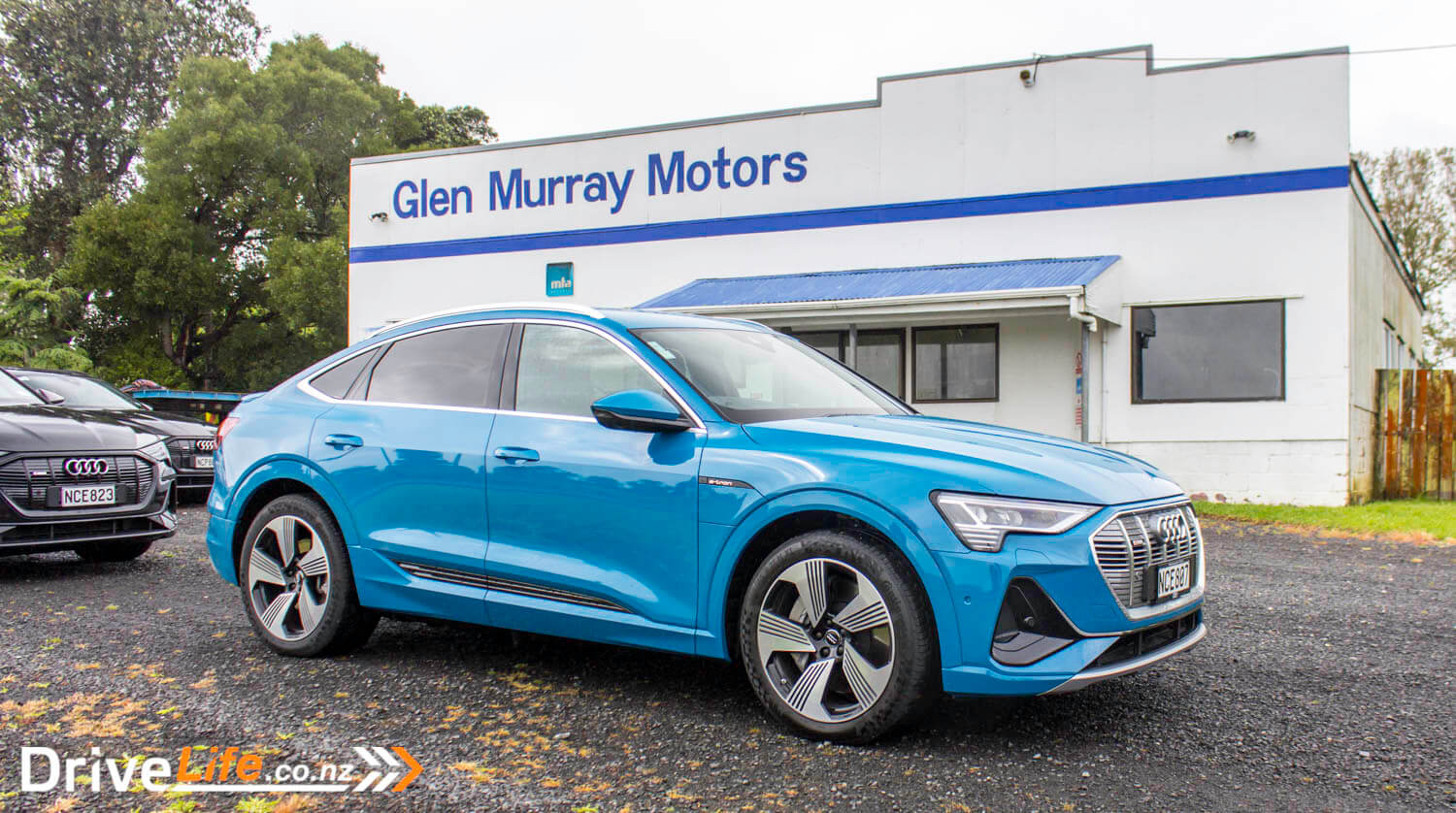
CHARGING
We were told that according to Flipthefleet, 72% of EV drivers experience little or no range anxiety, and in the same survey, 95% of drivers reported the majority of their charging is done at home.
As mentioned, the e-tron comes with a 7.2kW (32-amp) charger as standard, and this will pump in 36km of range per hour, with the car taking 12 hours to full charge from 0%. Obviously that’s going to be three times faster than using a standard 10-amp socket.

As mentioned in the launch, there’s some serious thermal battery management in the e-tron; Not only does this control the battery while driving, it also means the e-tron can take a charge of 150Kw, until battery state of charge equals 80%, then tapers off gradually.
Instead of worrying about battery capacity and range, Audi’s view is more down to how many kilometres a driver can get into a car in a certain amount of time fast charging, if they were on a long trip. Compared to other brands, their battery can take a faster charge for a much longer period, they say.
With that, we headed back to Auckland, the e-tron again showing its drivability. It’s an awesome EV, and the Sportback body shape has only made it a better-looking car. If you can live without that extra space in the boot, the Audi e-tron Sportback is an extremely desirable car. We’ve got one lined up for our normal full-length review, next month.
